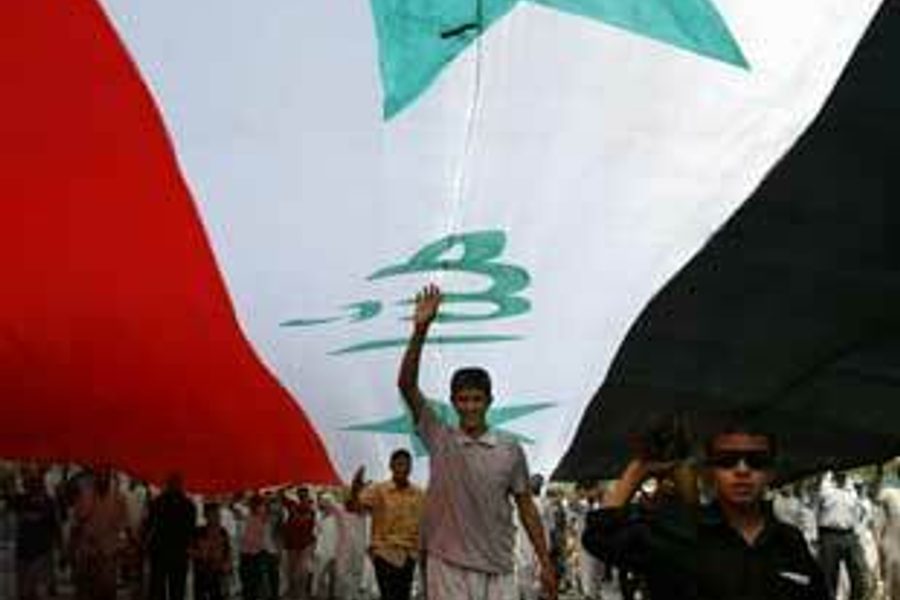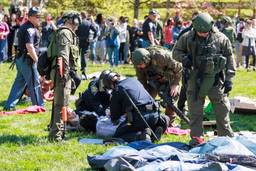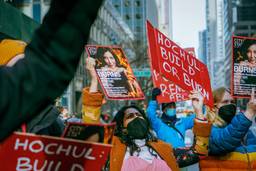Counterinsurgency 101
General Petraeus says he thinks the war in Iraq is winnable. His recent manual suggests otherwise.
Kristian Williams

A soldier in Baghdad, in town for the “surge” and wondering whether things really are as bad as they seem, might want to read FM 3-24, the U.S. military’s Counterinsurgency Field Manual, released last December. On Page 1-29, our soldier will find a handy table – “Successful and unsuccessful counterinsurgency operational practices” – that outlines the Dos and the Don’ts. (See sidebar.)
In which column would one place the major decisions of the Bush administration? The dissolution of the Iraqi army, the de-Baathification of the civil service, the failure to guard important historic and cultural sites, the granting of reconstruction contracts to American firms, and the long-term neglect of legal due process – all correspond to the advice on the “Don’t” side of the chart. And that’s not accounting for atrocities like those in Falluja, Haditha or Abu Ghraib. The “Dos” column, on the other hand, reads like a list of what the United States has failed to do: meeting the population’s needs, expanding secure areas, politically isolating the insurgents, training and equipping Iraqi forces, securing the borders and so on.
If this table serves as a pocket-sized score card, the 280-page manual is a full-bodied treatise on the subject. This is the first new counterinsurgency field manual to appear in 20 years, and as such, it serves as a tacit admission that the American strategy in Iraq is simply not working. The manual’s perspective takes on additional significance since its chief author, Gen. David Petraeus, has just taken over as the top commander in the war.
Petraeus, who wrote his dissertation at Princeton on the military lessons of the Vietnam War, distinguished himself in Mosul with his hearts-and-minds approach. Shortly after the 2003 invasion, he used the 101st Airborne to establish an overwhelming presence in the city, then promptly instituted foot patrols, held local elections and distributed money for reconstruction. At the year’s end, Mosul was one of the few pacified areas. But Petraeus’ approach ran counter to Rumsfeld’s. At the beginning of 2004, Rumsfeld replaced the Airborne with a Stryker force one-fourth as large. The Stryker Brigade halted the foot patrols and the local government’s efforts. Within a few weeks, Mosul was in chaos. The question facing Petraeus now is whether that process can be reversed – three years later, on a much larger scale, and with a budding civil war. It’s a tough test for the theory set out in his handbook.
Written primarily for “leaders and planners at the battalion level and above,” FM 3-24 sets doctrine for the Army, Marine Corps, Army Reserve and National Guard. It addresses practical, organizational and theoretical dimensions of low-intensity conflict, starting with general principles and then focusing on specific operations. Hence, it begins with a detailed analysis of the nature of insurgencies, which is then followed by chapters on the integration of civilian and military activities, the use of intelligence, the design, execution and sustainment of operations, developing local government forces and ethical constraints.
According to FM 3-24 the ultimate aims of a counterinsurgency program are political – winning legitimacy for the government and undermining the claims of the rebels. Strategically speaking, it is as important to meet the population’s needs as to hunt down the enemy. A counterinsurgency program is, as the manual puts it, “armed social work.”
But mounting a successful counterinsurgency is a dangerous balancing act. Any sign of weakness benefits the insurgents, who will exploit the atmosphere of uncertainty and insecurity in their efforts to discredit the government. But if the military is overbearing and oppressive, the insurgents can use public resentment and sincere grievances to gain support and justify violence. It is not enough to win the battles if the government loses the backing of the population in the process.
FM 3-24 does a good job conveying this complexity. It refers repeatedly to the localized, “mosaic” nature of insurgencies, and to their tendency to shift suddenly, unpredictably and often. The guide provides a list of “counterinsurgency paradoxes.” For example: “Sometimes, the More Force Is Used, the Less Effective It Is,” and “Tactical Success Guarantees Nothing.” It practically makes a mantra of the slogan “Learn and Adapt.” It also stresses the need for decision-makers to familiarize themselves with local conditions, the history of the region, the culture and the country’s institutions. While always careful to remind the counterinsurgent of the inevitable role violence plays, the manual especially emphasizes need for political legitimacy.
So along with the tedious details of military organization and procedure, the handbook provides a substantial outline of basic sociological concepts (plus an appendix on “social network analysis”), a political science lecture on the nature of legitimacy and history lessons drawn from American involvement in Iraq, Afghanistan, Vietnam, El Salvador and the Philippines; T.E. Lawrence’s Arabian campaign; Mao’s guerilla war in China; and several less famous (or infamous) colonial wars, revolutions, resistance movements and terrorist fights.
Direct discussion of the Iraq war is relatively polite and tends to foreground stories of U.S. military success. But since it is impossible to read the book without the present war in mind, certain implications are nevertheless obvious. There is scant mention of Abu Ghraib, for example, but there are extensive, repeated discussions of the legal, moral and political prohibitions against torture. (An appendix reprints the complete text of Common Article 3 of the Geneva Conventions). There is also a brief retelling of the French experience in Algeria:
During the Algerian war of independence between 1954 and 1962, French leaders decided to permit torture against suspected insurgents. Though they were aware that it was against the law and morality of war, they argued that –This official condoning of torture on the part of French Army leadership had several negative consequences. It empowered the moral legitimacy of the opposition, undermined the French moral legitimacy, and caused internal fragmentation among serving officers that led to an unsuccessful coup attempt in 1962. In the end, failure to comply with moral and legal restrictions against torture severely undermined French efforts and contributed to their loss despite several significant military victories. … France eventually recognized Algerian independence in July 1963.
- This was a new form of war and these rules did not apply.
- The threat the enemy represented, communism, was a great evil that justified extraordinary means.
- The application of torture against insurgents was measured and nongratuitous.
Under the circumstances, especially given the list of reasons for the French policy, it is hard not to read this paragraph as the professional military’s direct repudiation of the Bush-Gonzales-Rumsfeld torture doctrine.
Other historical cases cited in the manual provide similar, unsettling grounds for comparison. For example:
During Napoleon’s occupation of Spain in 1808, it seems little thought was given to the potential challenges of subduing the Spanish populace. Conditioned by the decisive victories at Austerlitz and Jena, Napoleon believed the conquest of Spain would be little more than a “military promenade.” Napoleon’s campaign included a rapid conventional military victory but ignored the immediate requirement to provide a stable environment for the populace.
The French failed to analyze the Spanish people, their history, culture, motivations and potential to support or hinder the achievement of French political objectives. … Napoleon’s cultural miscalculation resulted in a protracted occupation struggle that lasted nearly six years and ultimately required approximately three-fifths of the Empire’s total armed strength, almost four times the force of 80,000 Napoleon originally designated.
The Spanish resistance drained the resources of the French Empire. It was the beginning of the end for Napoleon.
The authors are not so blunt as to draw a direct comparison with Bush’s present misadventure, though they do certainly invite one. (Note the phrase “military promenade,” so like the “cake walk” we were promised in Iraq.) The analogy also poses inevitable questions, questions the manual does not and probably cannot answer directly: Given the central importance of political legitimacy, what do you do when the government is not legitimate, when the war is not just? What happens when the moral high ground has been irrevocably lost?
The counterinsurgency Field Manual hints at an answer. It comes as the heading to the Algerian case study quoted above: “Lose Moral Legitimacy, Lose the War.”
Petraeus the general still insists that the war can be won; Petraeus the theorist would seem to disagree.








